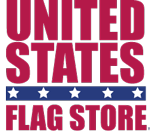The National Flag of Canada, which is also known as the Maple Leaf, was adopted in 1965 and marked the first time a national flag had been officially adopted in Canada to replace the Union Flag. The Canadian flag wasn’t without controversy. The Canadian Red Ensign had been used “unofficially” since the 1890s and was even approved in 1945 by Order-in-Council for use in places where it made it desirable to fly a distinctive Canadian flag.

It wasn’t until 1964 when Prime Minister Lester B. Pearson put together a committee to resolve the flag issues, thus setting off a serious debate about a flag change. The final selection was designed by George F.G. Stanley and John Matheson. Their maple leaf design was based upon the flag of the Royal Military College of Canada.
The Maple Leaf flag made its debut on February 15, 1965 and that date is now Canada’s National Flag of Canada Day; celebrations occur annually. Although there is not a law that dictates the official use of the Canadian Flag, there are some guidelines to follow. The flag can be displayed on any day on buildings operated by the government, airports, diplomatic offices, military, and by citizens during any time of the day. When flying the Canadian flag, it must be on its own pole and cannot be inferior to other flags, except for (in descending order) the Queen’s Personal Standard, the Governor General’s Standard, any of the Personal Standards of the members of the Canadian royal family, or flags of the Lieutenant Governors.
